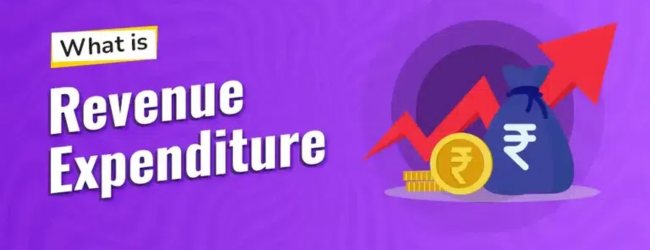Table of contents
Understanding the difference between capital expenditure and revenue expenditure is crucial for Indian businesses to manage their finances effectively, comply with accounting standards, and optimise tax benefits. Whether you are a small startup or a large enterprise, knowing how to categorise expenses properly impacts your financial statements and business decisions.
In this article, we will explore the key distinctions between capital and revenue expenditures, explain their characteristics, provide Indian business examples, and clarify common doubts. Let’s dive in!
Major Differences Between Capital Expenditure and Revenue Expenditure
| Aspect | Capital Expenditure | Revenue Expenditure |
| Definition | Investment to acquire or improve fixed assets | Expenses for day-to-day business operations |
| Benefit Duration | Benefits extend beyond one accounting year | Benefits realised within the current year |
| Accounting Treatment | Recorded as an asset and depreciated over time | Charged directly to the profit and loss account |
| Purpose | To increase asset value or productive capacity | To maintain asset and business efficiency |
| Examples | Purchasing land, machinery, and building | Repairs, rent, salaries, consumables |
| Tax Implication | Depreciation is allowed as a deduction over the asset’s life | Deductible as a business expense in the year incurred |
| Impact on Profit | Initial expense not shown immediately; impact through depreciation | Reduces profit in the same accounting year |
What is Capital Expenditure?

Capital expenditure (CapEx) refers to the money spent by a business to acquire, upgrade, or improve fixed assets that will provide benefits for more than one accounting period (usually more than a year). These assets could be machinery, buildings, vehicles, or land.
Key Features of Capital Expenditure:
- Creates future economic benefits.
- Increases the value or life of an asset.
- Recorded as an asset on the balance sheet, not as an expense.
- Depreciated or amortised over the asset’s useful life.
Example:
- Buying new machinery for ₹50 lakh.
- Constructing a new office building.
- Upgrading factory equipment.
What is Revenue Expenditure?

Revenue expenditure refers to the expenses incurred during the day-to-day running of the business. These expenses are used up within the current accounting period and are essential for maintaining operations, but do not create lasting assets.
Key Features of Revenue Expenditure:
- Recurs regularly.
- Maintains current asset value or business operations.
- Charged fully as expenses in the profit and loss account of the current year.
- Does not add value to fixed assets.
Example:
- Repairing machinery.
- Paying salaries and wages.
- Utility bills, like electricity and water.
- Advertising and marketing expenses.
ALSO READ – What Is Revenue Expenditure? Meaning, Examples & Importance
Why is Understanding This Difference Important for Indian Businesses?
- Accurate Financial Reporting: Correct classification helps in the true representation of financial health.
- Tax Planning: Capital expenditure benefits through depreciation over the years, while revenue expenditure is immediately deductible, impacting taxable income.
- Investment Decisions: Helps businesses decide when to invest in assets versus controlling operational costs.
- Compliance: Indian Accounting Standards (Ind AS) and Income Tax laws require precise differentiation.
ALSO READ – What Is a Revenue Stamp? Meaning, Use & Legal Importance in India
Indian Business Example
Consider a manufacturing company in Mumbai:
- It buys a new machine for ₹1 crore (Capital expenditure). The cost is capitalised and depreciated over 10 years.
- It spends ₹5 lakh on machine repairs in the same year (Revenue expenditure). This amount is expensed immediately in the Profit & Loss statement.
This classification affects the company’s reported profits and tax liability for the year.
Key Takeaways
- Capital expenditure creates long-term assets, while revenue expenditure covers day-to-day running costs.
- CapEx is recorded as an asset and depreciated; Revenue expenditure is charged directly as an expense.
- Tax treatment differs: Revenue expenses reduce taxable income immediately, CapEx benefits through depreciation.
- Proper classification impacts financial statements, tax compliance, and business decisions.
- Indian Accounting Standards and tax laws emphasise a clear distinction.
Learn more about Business skills here to unlock new growth opportunities
Need Expert Guidance?
Starting a business can be challenging, but you don’t have to do it alone! At Boss Wallah, our 2,000+ business experts are ready to provide valuable insights and guidance. Whether you need help with marketing, finance, sourcing, or any other area of your business, our business experts are here to help you succeed
Confused about Which Business to Start?
Want to start your own business but unsure which one to choose? Explore Boss Wallah, where you’ll find 500+ courses by successful business owners, featuring practical, step-by-step guides on starting and growing various businesses. Find your perfect business idea today
Conclusion
The difference between capital expenditure and revenue expenditure is a fundamental concept that every Indian business must master. It ensures correct accounting, efficient tax management, and informed decision-making. By understanding these distinctions, businesses can better control their finances and comply with regulations effectively.
Explore more blogs to learn more about Business
Frequently Asked Questions (FAQs)
Money spent to acquire or improve fixed assets providing benefits beyond one year.
Expenses incurred for daily business operations and maintenance.
It is capitalised and depreciated over the asset’s life, reducing taxable income gradually.
Usually, revenue expenditure is not significant unless it significantly enhances asset value.
No, salaries are revenue expenditure.
It can distort profits and lead to incorrect tax filings.
Revenue expenditure.
Depreciation spreads the cost of capital assets over their useful life.
Yes, land is a fixed asset.
Usually, capital expenditure if it increases asset value or life.


